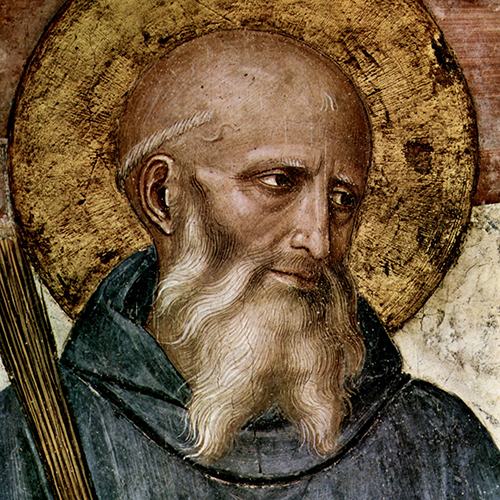
Feast day: July 11
Much of what we know about Saint Benedict comes from legends, and their accuracy is debated by scholars. Legend holds that he was born in the mountains, northeast of Rome, and that he fled the eternal city as a young man to become a hermit. He went on to found monasteries south of Rome, writing a rule for the monks to live by.
The Rule of Saint Benedict (Regula Benedicti) was adopted by thousands of monasteries in Europe. Benedictines (those who live by the Rule of Saint Benedict) own nothing personally, although they have enough food, drink, and clothing. They work with their hands for about six hours a day, although Benedictine communities who sponsor schools spend their days in teaching. Their leisure is spent reading Scripture and holy writings and praying with the community.
A large focus of the Benedictine Rule is to show great compassion and hospitality to strangers, the young, the old, and the sick. Saint Benedict’s love and knowledge of Scripture shaped his Rule. In it he often quotes the Gospels, for example, “Let all guests who arrive be received like Christ, for He is going to say, ‘I came as a guest, and you received Me’” (Matthew 25:35) (The Rule of Saint Benedict, chapter 53).
The Rule of Saint Benedict was also written for ordinary Christians who want to develop a pattern of living like Christ. Today the spiritual wisdom of Saint Benedict continues to lead more than 20,000 monastic men and women and uncounted oblates (lay associates).
(Image Fra Angelico, public domain, via Wikimedia Commons)